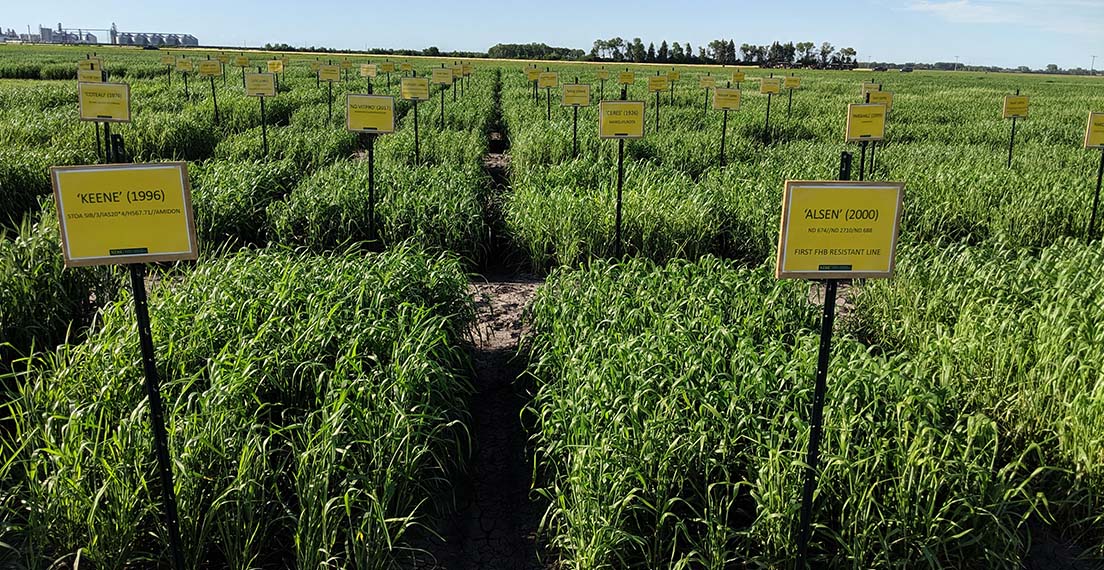Innovation to Meet Future Challenges – Ten Years Later
Editor’s Note: This article on wheat breeding innovation was originally published in the September 2014 issue of “Wheat Letter.” In the wake of the first deregulation of a biotechnology trait for wheat by USDA-APHIS, the article remains quite relevant ten years later. The article was written by then USW Vice President of Policy Shannon Schlecht.
If you have ever planted a garden, you know how much effort it takes to help your plants thrive — and how often the results do not match up with your expectations.
Now think about farmers facing similar challenges from insect, weed, and disease pests as well as too much or too little heat and rain. The stakes are much higher when it comes to producing food for 7.3 billion people and more every day*. A destructive virus decimated papaya production in Hawaii a few years ago. In Florida, citrus greening disease that blocks the flow of nutrients to the fruit now infects an estimated 80 percent of its orange trees. Entire industries are at risk.
Wheat farmers, too, battle such challenges. Intensive wheat production in Europe and parts of the United States could not produce yields reaching up to 10 metric tons or more per hectare without preventing disease with frequent fungicide applications each season. Although the UG99 rust strain generated global concerns, thankfully its worldwide impact to date has been much less than feared. Yet new threats will come as they always do. It is one reason why wheat farmers support innovative technology, including biotechnology, to help produce a more sustainable and affordable supply of food for the growing world.
“The wheat farmers who support innovation … greatly respect customer choice as well, but they also believe they will need every available tool to face future challenges and meet growing global needs.”
Conventional Breeding…
Scientists and breeders have been able to overcome many of these threats through conventional breeding. Crossing plants with known resistance to incorporate the desired traits into new varieties. Where genetic markers have been identified, marker-assisted selection (MAS) greatly improves the success rate of achieving those desired traits. Doubled haploid technology, which reduces the number of generations needed to stabilize a new variety, can help bring these traits to market quicker for tools against these challenges.
While these conventional techniques bring the desired traits into new varieties to address specific problems, they may also result in transferring genes that do not benefit the new variety. For example, a breeder may get rust resistance but lose another desired trait such as test weight or protein quality. Through many years and crosses, it is possible to minimize these outcomes, but time may not be a luxury in many cases to address a specific challenge.
…And Innovation
Modern biotechnology, however, is helping restore papaya production in Hawaii and research to resist citrus greening disease is underway (read more here). Concerned growers sparked the increase in research that led to these alternatives. Wheat farmers in the United States, Canada, Australia and other countries have also stood up to say the world needs advances that improve yield, quality, production efficiency and sustainability. Private and public researchers responded and now they are using the full range of technology to find ways to achieve those long-term goals.
As with the citrus greening research, this increased investment in wheat is not limited to so-called GMO technology. Just this week, scientists at Washington State University announced they have identified a gene in wheat that regulates how the plant shares genetic information. The researchers said the discovery “clears the way for breeders to develop wheat varieties with the disease- and pest-resistance traits of other grasses, using a legion of genetic tools that can reduce crop losses and pesticide use.” This discovery likely will not require single gene transfer, but other research does center on the remarkable advancements in biotechnology. All these tools will help wheat breeders address specific challenges without altering other desirable characteristics of wheat and the flour it produces.
The wheat farmers who support innovation firmly believe that the new varieties created through any technology must ultimately meet regulatory requirements of the country that produces them and the countries that import them. They greatly respect customer choice as well, but they also believe they will need every available tool to face future challenges and meet growing global needs.
*Global population today has grown to more than 8.1 billion people.


